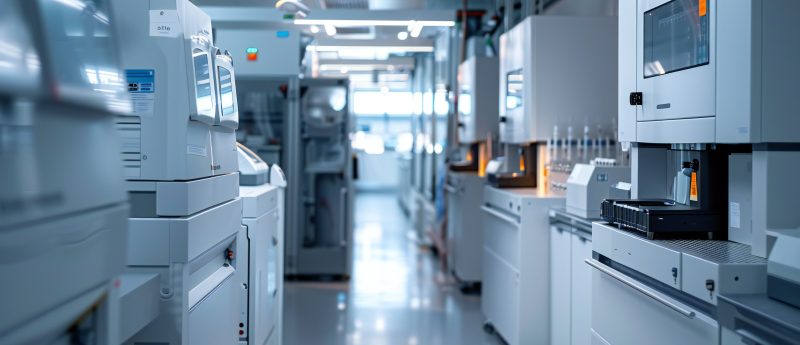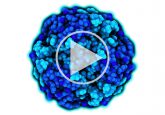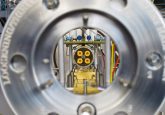Both LBA and LC–MS have their place in drug discovery and development. What is the advantage of using them as complimentary tools?

Fabrizia Fusetti (QPS)
“LBA remains a valid bioanalytical technique for the quantification and functional characterization of proteins. Although superior in specificity, selectivity and multiplexing ability, LC–MS techniques are not yet able to deliver the sensitivity or the level of automation and miniaturization provided by modern ligand binding approaches.
Used in combination, however, the two techniques can address complex bioanalytical questions. They can bridge functional knowledge with high molecular detail, providing more accurate insights into PK/PD behavior of biotherapeutics.”
Olivier Heudi (Novartis)
“There is no doubt that LBA and LC–MS/MS have their place in the discovery and development spaces and they should not be looked at as competitive methods but rather as complementary. Indeed, LBA is suitable to support PK programs where a low limit of quantification is required. However, the method development time can be very long and demanding. LC–MS/MS, although not as sensitive as LBA, can be applied to the analysis of compounds where antibodies cannot be found. In addition, the time needed to develop the LC–MS/MS assay is short and several molecules can be analyzed simultaneously. This offers a great advantage for the compound selection (e.g. antibodies) during the early discovery phase. Both LC–MS/MS and LBA can provide information on the binding site of the antibody (drug in development) but LC–MS/MS enables the structural elucidation of the binding site that is useful to understand the drug activity.”
Steven Piccoli (GSK)
“Each of these technologies have strengths and weaknesses, which generally do not overlap. Fully understanding those characteristics makes it possible to answer the same or different aspects of the analytical question for a single program. If the desired result is a simple measurement of mass (concentration), either may be used, but may not always give identical answers due to the technologies’ differing measurements of physical characteristics of the analyte (indirect binding interaction vs. direct chemical assessment). Generally speaking, the time allowed for development, potential desired throughput and adequacy of target detection determine the choice for one method or the other and occasionally results in both. Appropriate reagent availability for LBA is always a concern – generation and screening may greatly extend development time. However, for monoclonal antibody-based therapeutics or replacement drugs, these are frequently available from the original reagent campaigns. LC–MS (nonhybrid) is normally reagent independent. LBA frequently has the advantage in cost, throughput and ease in analysis or outsourcing to a clinical laboratory. However, the primary consideration is always which technology can deliver appropriate actionable information for the scientific or clinical question under investigation.”
Omnia Ismaiel (PPD)
“Traditionally, LBAs have been the technique of choice for the detection and quantitation of biotherapeutics. Historically, for antibody-drug conjugates (ADCs), LBA methods were routinely used for determination of the total antibody and conjugated antibody, while LC–MS/MS-based methods were mainly used for quantitation of the antibody-conjugated and unconjugated small molecule drug and its metabolites.
Currently, hybrid LBA/LC–MS (also known as hybrid immunoaffinity/LC–MS) methods are increasingly being used for quantitation of biotherapeutics. Hybrid LBA/LC–MS methods combine the selective immunocapture/isolation of LBA techniques and the selective detection of LC–MS, merging the strengths of both approaches, it can be used not only as a complementary tool to LBA but also as an alternative in several instances [1]. The following are among the advantages of using LBA and LC–MS as complementary tools:
Multiple analyte detection capabilities
The multiplexing capabilities and selectivity of MS makes it possible to monitor surrogate peptides from different domains and can provide very important structural information (e.g., intact analyte versus total analyte). Moreover, hybrid LBA/LC–MS can be used for quantification of several different biotherapeutics simultaneously in a single assay (e.g., co-dosed or subsequent dosing) [2].Assay implementation flexibility
To support ADC bioanalysis, total antibody assay and conjugated antibody or antibody-conjugated drug assays are needed. Often, two of these quantitative measurements can be obtained in a single hybrid LBA/LC–MS method. Alternatively, several different assays can be implemented, totalantibody by LBA, conjugated-antibody or antibody conjugated-payload by hybrid LBA/LC–MS/MS and unconjugated-payload by LC–MS/MS.Use of readily available reagents.
The availability of LBA critical reagents (capture and detection) may be a challenge in some cases. Hybrid LBA/LC–MS/MS is less dependent on critical reagent availability, especially in early discovery, as generic reagents such as protein A and G magnetic beads, anti-human Fc and anti-human IgG biotinylated antibodies are readily available and can be easily used [3].Reduced method development time
The relatively long time needed to develop an LBA assay may limit the use of LBA in the early stages of drug discovery and development. On the other hand, as illustrated by Kaur et al [4], several universal approaches (i.e., universal capture or universal surrogate peptides for non-clinical studies) can be applied to a wide range of analytes with either a small amount of, or no extra development work.Hybrid LBA/LC–MS/MS as a troubleshooting tool
Multiple LBA formats (e.g., drug-antibody ratio (DAR)-sensitive or DAR-insensitive) and critical reagent screening may be needed. Significantly different PK profiles may be obtained for a drug candidate due to differences in critical reagents, assay formats and DAR sensitivity [3]. In the case of conflicting LBA results, hybrid LBA/LC–MS can be used as a complementary tool for troubleshooting. Hybrid LBA/LC–MS can also be used for characterizing LBA critical reagents.Cross reactivity of capture reagents used in LBAs to any homologous endogenous component may affect the accuracy of the quantitation. Monitoring signature surrogate peptides in hybrid LBA/LC–MS/MS with a bottom-up approach can usually overcome such problems.
Hybrid LBA/LC–MS provides analyte structural information
MS allows one to track specific structural modifications (post-translational modifications), such as oxidation and deamidation. By combining the power of chromatographic separation with the power of high-resolution MS , amidated and deamidated forms of the target biotherapeutic can be separated and quantified.Reduced susceptibility to matrix interferences
The binding of endogenous components and the presence of the target antigen or antidrug antibodies can interfere with LBA PK assays. Depending upon the selection of LBA reagents and assay format, LBAs only measure the free analyte [5]. LC–MS can be used to measure total analyte by using direct digestion or protein precipitation followed by digestion/LC–MS (total versus free analyte). Similarly, interference from unconjugated antibody may reduce the specificity/accuracy of LBAs used for quantitation of an intact ADC and, therefore, a different assay format may be needed, such as a hybrid LBA/LC-MS/MS assay.”[1] Ismaiel OA, Mylott WR Jr, Jenkins RG. Do we have a mature LC–MS/MS methodology for therapeutic monoclonal antibody bioanalysis? Bioanalysis. 9(17): 1289–1292 (2017).
[2] Jiang H, Zeng J, Titsch C et al. Fully Validated LC-MS/MS Assay for the Simultaneous Quantitation of Coadministered Therapeutic Antibodies in Cynomolgus Monkey Serum. Anal. Chem 85(20): 9859 – 9876 (2013).
[3] Kumar S, King L, Clark TH et al. Anti-body drug conjugates nonclinical support: from early to late nonclinical bioanalysis using ligand-binding assays. Bioanalysis. 7(13): 1605–1617.
[4] Kaur S, Liu L, Cortes DF et al. Validation of a biotherapeutic immunoaffinity-LC-MS/MS assay in monkey serum: ‘plug-and-play’ across seven molecules.Bioanalysis. 8(15): 1565–1577 (2016).
[5] Wang SJ, Wu ST, Gokemeijer J et al. Attribution of the discrepancy between ELISA and LC-MS/MS assay results of a PEGylated scaffold protein in post-dose monkey plasma samples due to the presence of anti-drug antibodies. Anal Bioanal Chem. 402(3):1229–39, (2012).
< Back to – Ask the Experts: hybrid LBA/LC–MS

![Omnia_Ismaiel[1]](https://www.bioanalysis-zone.com/wp-content/uploads/2019/09/Omnia_Ismaiel1-225x300.jpg)





